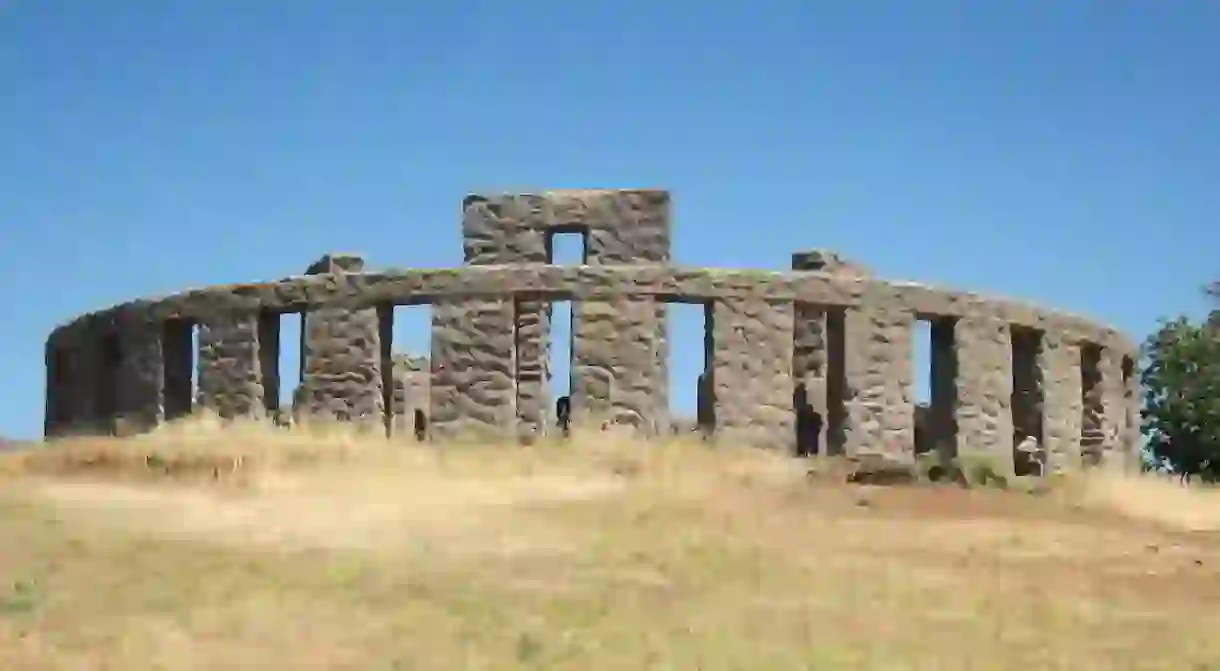This Washington Town Houses a Stonehenge Replica

Washingtonians don’t have to fly across the Atlantic Ocean to visit a historical English monument—they’ve already got one sitting in the middle of their state.
A number of zany monuments stand tall across the Evergreen State. And while many of them are unique to Washington, the Maryhill Stonehenge replica is not. The roadside attraction is as its name describes, a copy of the Neolithic structure Stonehenge. But rather than deter visitors, the European version adds to the American monument’s allure and popularity. Like all structural oddities, it’s not just the monument itself that makes the Maryhill Stonehenge fascinating, but also its history.
Made up of only 58 people and sitting equidistant from the state’s two largest cities, Seattle and Spokane, Maryhill, Washington, is a quintessential small town, but definitely not one to be underestimated. Maryhill offers an array of cultural activities like the Maryhill Museum of Art, the Maryhill Winery & Amphitheater, and the Maryhill State Park. Each of these sites sits along the edge of the Columbia River, the strip of water that separates Washington and Oregon. Its landscape is beautiful in every sense of the word, so it’s no wonder that in the early 1900s, Pacific Northwest businessman Sam Hill decided to purchase the land and make it his home.
If the name Sam Hill sounds familiar, that’s because he’s the man responsible for the Peace Arch—built in 1921 to celebrate 100 years of peace between Canada and the United States—that connects Blaine, Washington, and Surrey, British Columbia, at the border. His second memorable contribution to the U.S. is the Maryhill Stonehenge replica, the first World War I memorial to be built in the nation.
Similar to the Peace Arch, the Maryhill Stonehenge Memorial represents peace. It also represents bravery and heroism, all qualities held by the servicemen from Klickitat County, Washington, who sacrificed their lives during the Great War. Work on the monument began shortly after Hill’s arrival and was officially dedicated on July 4, 1918. Like the rest of the town, the memorial overlooks the expansive Columbia River.
Originally, the structure was to be made out of native rock, but Hill found the material too brittle for longterm use, so he opted for concrete instead. Between the concrete material and the donation fund used today for ongoing preservation, the Maryhill Stonehenge Memorial continues to stand tall a century later.
The Maryhill Stonehenge Memorial isn’t the only Stonehenge replica out there. They’re scattered all over the world in places like Esperance, Western Australia, Fortine, Montana, and Odessa, Texas. There’s even a replica made entirely out of styrofoam sitting in Centreville, Virginia. Though, that last one’s called Foamhenge, not Stonehenge.
No matter how many other duplicates exist outside of Washington, the Maryhill Stonehenge replica is unique in its history, making it a monument that shouldn’t be missed.













